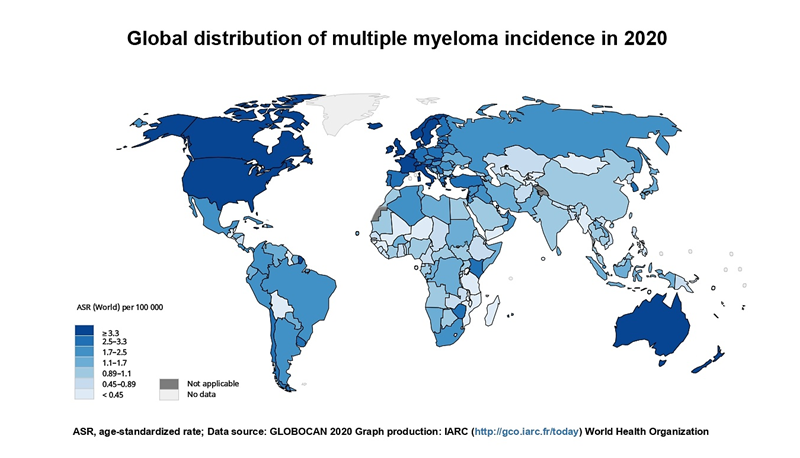
Joint medical study with APRU deciphers global multiple myeloma trends

The study on multiple myeloma by CU Medicine and APRU is published in the top tier journal, The Lancet Haematology.
CU Medicine has conducted a study with the Association of Pacific Rim Universities (APRU) to investigate the global distribution, risk factors and epidemiological trends of multiple myeloma—one of the major types of haematological malignancies. Details of the study have been published recently in the top international medical journal, The Lancet Haematology.
A rising trend of multiple myeloma
To understand the most updated geographical distribution and identify high-risk population groups, the research team retrieved data from international databases such as the Global Cancer Observatory, WHO mortality database and WHO Global Health Observatory data repository for the age-adjusted incidence, mortality and prevalence of different risk factors.
The results showed that the incidence of multiple myeloma was higher in high-income jurisdictions, and was proportional to the gross domestic product per capita levels, the human development index as well as the prevalence of physical inactivity, overweight and obesity rates, and diabetes.
Multiple myeloma has been rising globally in recent years, particularly in older males from high-income countries. It is recommended that policy makers in different regions should implement evidence-based, targeted prevention strategies to control relevant risk factors.

The global distribution of multiple myeloma incidence in 2020.
Protecting global health with global collaboration
This study is a collaboration between Prof. Martin Wong and Dr. Junjie Huang from The Jockey Club School of Public Health and Primary Care at CU Medicine and Prof. Mellissa Withers from the Keck School of Medicine at the University of Southern California. Prof. Wong co-chairs the Non-Communicable Diseases Working Group of the APRU Global Health Programme to which Prof. Withers is the Programme Director. By facilitating collaboration and enhancing regional dialogue, the Global Health Programme works to bridge health divides, promoting and protecting population health and meeting shared health challenges.
Read more: